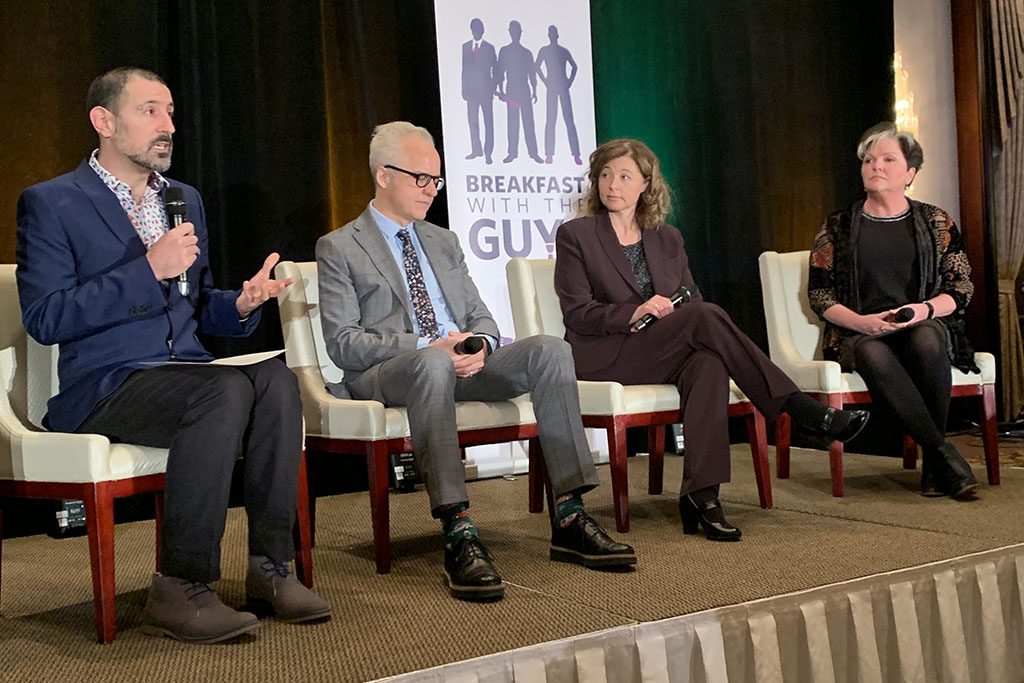The Alberta Council of Women’s Shelters (ACWS) has partnered with the Alberta Construction Safety Association on a pilot project to help construction workers identify and deal with signs of domestic violence in their workplace.
Christie Lavan, the pilot’s program manager for the ACWS, says the intent is to adapt the Council’s prevention tools to the construction industry.
Statistics indicate that 90 per cent of victims of violence will tell eventually tell a colleague in the workplace. Knowing what to do with that information can be a big step towards preventing violence from escalating.
Lavan says the Council’s training curriculum has been adapted to members of the safety association through in-person workshops. Online training that covers basics is also offered for free for two years through the construction association as a “first step” to spread the message.
“It is not only a 101 (course) to develop awareness in the construction sector but hopefully it motivates people to reach out to community-based services like us to get more support.”
She says the Council saw partnering with the ACSA as sensible because the association has a training infrastructure and vast membership.
Alberta’s building industry employs 250,000 people and contributes about 25 percent of all workers compensation premiums in the province, she says.
While addictions and economics play roles in domestic violence, the most dangerous means is through “coercive control” to instill fear and compliance in a spouse. “It’s the spider and the fly . . . very much about manipulation and control.”
Stereotypes of both genders exacerbate power and control cycles. “It is frighteningly common how many relationships are under this dynamic,” she says, noting that psychological abuse can often lead to physical abuse.
Lavan says the Council’s training covers how to recognize patterns of abuse. An example might be someone who stays at work late a lot because “it is the safest place for them to be.”
Another sign could a flurry of phone calls and/or text messages from their spouse. It might appear “cute” to colleagues but “we know from research that is a really common sign of an abusive controlling relationship.”
The ACWS set up a hazard recognition program called DVIS (Domestic Violence Information System) — a takeoff on the WHMIS safety hazard initiative – that uses icons to set off alarm bells (one shows multiple text messaging) of a potential form of abuse, she says.
The Council’s “toolkit” assists employers in developing policies, procedures and hazard assessments. Employers learn how to train staff to understand signs of domestic violence, provide support for victims and recognize and deal with staff who might be perpetrators, Lavan says.
The idea is to help businesses develop their own responses to support staff living with domestic violence at home, she says.
She adds when an ex-partner is in a shelter for safety, their partner often knows where they work, making it the perfect place for conflict leading to violence. “There have been a number of high-profile domestic violence cases (in the workplace)” that have led to changes in occupational health and safety legislation in Canada.
Lavan points out that the potential for serious injury or death is real, not only to the targeted spouse but also to other staff in the company. “It’s a workplace safety hazard.”
Over the long run, the Council hopes to continue to work with the ACSA. “We are a small organization so we can’t go out and serve 50 construction companies, but we’d like to share our content and expertise with people who train . . . for those sectors. The PCLs or Ledcors can develop policies that they can share back with the ACSA with the smaller construction firms.”











Recent Comments
comments for this post are closed